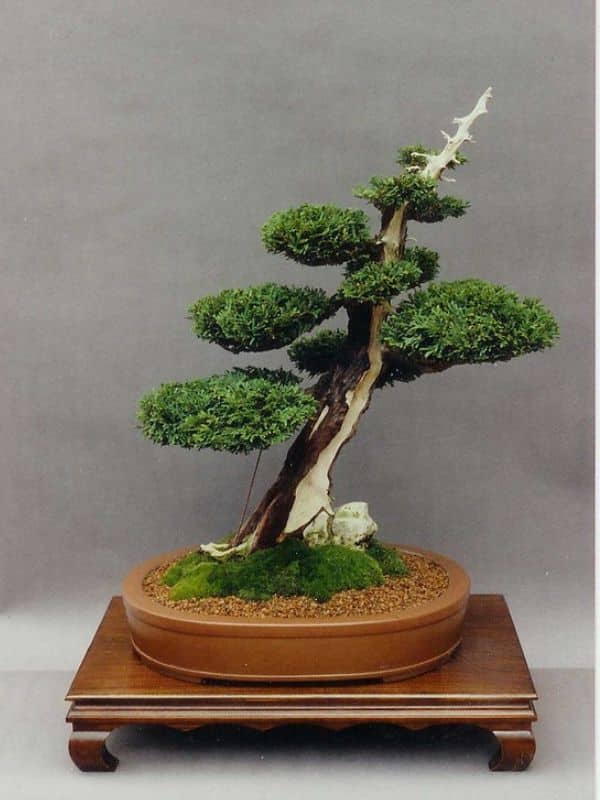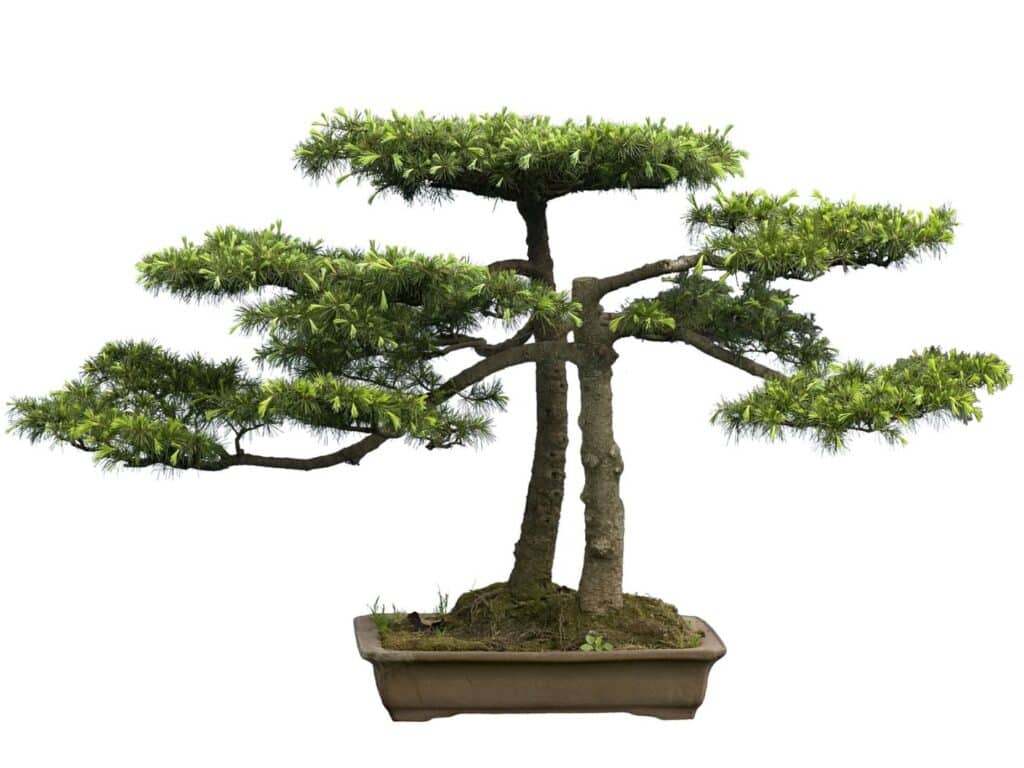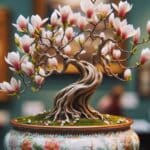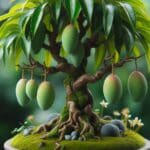A cedar bonsai can be an excellent addition to your bonsai collection because this tree has a lot of characteristics that give it a unique appearance. The exciting look of this specimen tree makes it ideal for creating a focal point in a garden or on a sunny patio.
Some growers love this tree species for its aesthetics, while others invest in it for its rich symbolic meaning. These beautiful trees are a powerful symbol of greatness, nobility, and strength.
Growing a cedar tee is challenging because it can take a long time for the species to develop into an impressive-looking bonsai. It is, however, worth the trip since this little bonsai pet can keep you content for the rest of your life since this tree species has a life span of over 800 years.
In this guide, we will take a closer look at how to grow this popular bonsai species and share some tips on how to keep your little tree healthy and beautiful.

Plant Facts
| Scientific name | Cedrus Libani |
| Common names | Cedrus, Cedar |
| Family | Pine |
| Plant Type | Ornamental tree |
| Height and Width | 100 ft. tall (natural), 1–3 ft. tall (bonsai) |
| Origin | Lebanon and the eastern coast of Mediterranian and Asia |
| Flower colors | Small yellow spurs of pollen or light blue spurs |
| Foliage color | Light to dark green |
| Sun Exposure | Indirect light |
| Soil Type & pH | Well-drained, acidic soil |
| Special features | Low Maintenance. Good for Containers. Interesting needle-like foliage |
What Does a Cedar Bonsai Tree Look Like
Cedar trees are favored tree species by bonsai artists because they produce short clusters of needle-like foliage along their twigs. The small delicate foliage is ideal for creating a tree with a miniature appearance. The bark of this tree is also highly textured and perfect for creating a tree with a more mature or aged appearance.
If these trees are grown from saplings, they can easily be manipulated into any of the common bonsai tree shapes. The Moyogi (informal upright), Shakkan (slanting), Han-kengal (Semi cascade), and Sharimiki are some of the most popular bonsai styles used for this type of tree.
Where do Cedar Bonsai Trees Grow
Cedar bonsai trees are typically outdoor bonsai but they can be kept indoors during winter time to protect them from the winter frost. If it is permanently kept as an indoor tree then it is best to position the little in a sunny window where it can receive lots of sunlight.
How to Grow Cedar Bonsai Trees
It can be tricky to start a cedar bonsai from scratch. These trees are not too easy to propagate but, once your sapling is nice and strong, it will be relatively easy to manipulate it into a suitable style.
Let’s take a look at the best method for growing cedar trees that you can shape into a beautiful bonsai.
Propagation
Cedar species can be propagated from cuttings or air layering but these techniques do have a poor success rate. It is usually best to start this type of tree from seed.
Before the seeds can be sowed in springtime, it is usually best to let them undergo a cold stratification process. Keep the seeds wrapped in a moist paper towel in a plastic bag in the refrigerator for 90 – 12 days before planting them. This dormancy stage is important for helping the seeds germinate.
Because the seeds can be so tricky to germinate, it is usually best to get a young tree from a local nursery. This can give you a huge head start since the tree grows quite slowly.
Soil
Cyprus cedar trees are usually kept in a shallow pot with very little acidic soil, which helps keep the tree small. Without the proper training techniques, these trees can reach over 100 feet.
Because so little soil is used, investing in a high-quality bonsai soil mixture is usually best. A mix of peat moss, perlite, and pine bark will work well for this tree species.
Pruning
A young cedar tree should be pruned regularly to keep it small. It is best to shorten the twigs during early spring. New shoots can also be pinched back throughout the growing season.
When you are pruning or pinching back the foliage, you should be careful not to cut off too much since this may cause stress to your miniature tree.
Larger branches are usually pruned in autumn. This type of bonsai is prone to scarring, so you must be careful while pruning the tree. Bonsai artists often work around the scarring by creating deadwood features to conceal the scars or to give the tree a more aged appearance.
It is expected to wire the branches when training cedar bonsai trees.
Young and flexible branches of this tree can easily be wired in aluminum or copper wire. After wiring, the branches can be bent into shape to create a more attractive look for your tree.
Older branches are usually modified or shaped with guy wires (anchored downward and attached to the container.)
Repotting and Transplanting
A young cedar tree of two to five years should be repotted every two years. Mature specimens of over 6 years can be repotted every three to four years.
The best time to repot a cedar bonsai tree is in early spring before the new growth starts to appear on the tree. You can repot the small tree into a new container if the old bonsai pot has become too small. Using a bonsai pot with lots of drainage holes is crucial so your small tree won’t develop root rot.
While replanting the tree, keep root disturbance to a bare minimum. Try to prune back about one-third of the root system with pruning shears during repotting so there will be enough space in the container for the roots to grow.
How to Care for a Bonsai Cedar Tree
Cedar bonsai trees are relatively easy to care for because they are slow growers. You will need a lot of patience to sculpt this tree into a bonsai style but physically, the tree species doesn’t require much effort.
Here is a quick look at a simple care regime for growing cedar bonsai trees.
Water
These trees require regular watering because they can die if the root ball dries out completely. Since the container of this tree is small and flat, it might be necessary to water your tree daily. Just be careful not to overwater the tree. All the cedar species are vulnerable to root rot if they are kept in soggy conditions.
The best way to water your tree is by waiting for the soil to dry out between watering. Watering should also be reduced during the colder winter months because the tree is more susceptible to frost if the roots are wet.
Sunlight
Cedar bonsai trees prefer a full sun position during summer, but they can be sensitive to frost in winter. Ideally, these bonsai specimens should be kept outdoors during the warmer season, and they should be brought indoors to protect them from the cold during winter.
A shade cloth should protect the tree from the scorching sun in hot regions.
Temperature and Humidity
Cedar trees prefer a temperature of 85 – 90 degrees in the summer. The tree should be protected from intense light and heat if the temperatures rise over this temperature.
Some cedar species can tolerate more cold wind than others. The eastern red cedar bonsai is able to withstand cold temperatures of 15 – 20 degrees F but all other species should be protected if temperatures reach this point.
Fertilizer
A liquid fertilizer can be applied every two weeks during the growing season. If you cannot find liquid fertilizer, you can also use organic fertilizer every four to six weeks.
This beautiful bonsai only needs a little fertilizer during the colder months. Even though it is evergreen, it becomes primarily dormant for the colder season.
Pests and Diseases
You should regularly inspect your young trees for pests and diseases. Cedar trees can be quite vulnerable to aphids and fungi.
One of the most common issues with this type of tree is root rot. If the tree is kept in waterlogged conditions or if the soil doesn’t drain well, the roots will start to rot or fungus can start growing on the root system.
Common Varieties and Cultivars
Just about any type of cedar tree can be used for bonsai creations. Most bonsai experts do, however, prefer to focus on four species of this type of tree which include the following:
- Atlas Cedar (Cedrus atlantica) – Blue-grey needles and light grey bark
- Himalayan cedar (Cedrus deodara) – Longer green needles
- Cedar of Lebanon (Cedrus Libani) – Dark green needles and greyish brown bark
- Cyprus cedar (Cedrus brevifolia) – Short blueish-green needles and a wide canopy
Conclusion
Cedar trees are stunning, especially if they are successfully turned into bonsai trees. However, it takes many years to grow a beautiful, mature bonsai cedar tree successfully. Because of its slow-growing rate, it is usually best to leave this tree for advanced bonsai enthusiasts. A bonsai beginner might have difficulty waiting for this tree to mature.
We hope you enjoyed our guide and found these tips helpful. We are confident that you will have lots of fun developing this type of tree into a stunning specimen bonsai, and we wish you all the best on your bonsai-growing journey.
Up next:
Image by jackq/depositphotos







